Bench top Tool Caddy
This handy tool caddy keeps all your hand tools in one place for a cleaner bench top and organised workshop.
07/09/2017
I found the idea for this bench top tool caddy in The Woodworker magazine (UK), and decided to make one for my workshop. Í still had some pine plywood left over from a previous project to make the tool caddy, but you can easily modify the measurements if you want to make it out of pine or hardwood.
The tool caddy has large storage compartments in the main section for larger tools, it has a small compartment with a lid for pencils, tape measure and other smaller items, and there is a pullout drawer at the back of the caddy.
The finger joints used to assemble the tool caddy provide a dovetail effect and add to the overall finished design.
YOU WILL NEED:
All sections 16mm pine plywood, unless otherwise specified.
2 of 400 x 300mm - sides
1 of 400 x 300mm - back
1 of 400 x 300mm - front
1 of 400 x 284mm - insert, back
1 of 368 x 184mm - insert, front
2 of 224 x 80mm - dividers, insert-back
1 of 224 x 78mm - divider, insert-front
1 of 268 x 368mm - insert-base
1 of 368 x 76mm - storage compartment, base
1 of 400 x 108mm - lid
1 of 368 x 284mm - base
2 of 365 x 82mm - drawer front/back
2 of 252 x 82mm - drawer sides
1 of 333 x 252mm - drawer base
Knobs or handle of choice plus screws
2 butt hinges plus screws
Wood glue
TOOLS:
Drill / Driver plus assorted bits
Jigsaw plus clean-cut blade
Orbital Sander plus 120- and 240-grit sanding pads
Tape measure and pencil
Buy everything you need for this project at Builders Warehouse.
HERE'S HOW:
1. Measure and mark on the sides, front and back for cutting out the slots for the finger joints - see measurements for these sections below. Measure and cut exact - you want the finger joints to be snug and tight when you assemble.
GOOD TO KNOW: You can easily cut out the finger joints using a jigsaw.
2. Use wood glue to assemble the sides, front and back sections. Don't attach the base section just yet.
Now you can begin to assemble the insert.
3. Measure and mark 184mm on one side of both dividers - insert back and cut a curve at the top of the [2] dividers.
4. Mark 112mm from both ends of the insert back and glue the [2] dividers inside this mark. There will be a 112mm spacing for all three storage compartments. Let the glue dry for an hour or so.
5. Measure down 50mm on the back of the insert-back and glue the storage compartment base below this line. Let the glue dry for an hour or so.
6. Glue the divider-front and insert-front onto the insert-base and put aside for an hour or so for the glue to dry.
7. Finish the insert assembly by gluing the front part of the insert to the back part. Put aside for the glue to dry for an hour.
8. Glue the side sections onto the completed insert assembly.
GOOD TO KNOW: Use a rubber mallet to tap sections into place where the joints are tight.
GOOD TO KNOW: Place a bead of glue along all the edges to be joined together.
GOOD TO KNOW: Once everything is assembled, clamp and leave overnight.
9. Assemble the drawer by gluing the sides, front and back onto the base.
10. Attach the lid onto the storage compartment with butt hinges. Make sure the barrel of the hinge rests over the edge of the back so that it opens and closes properly.



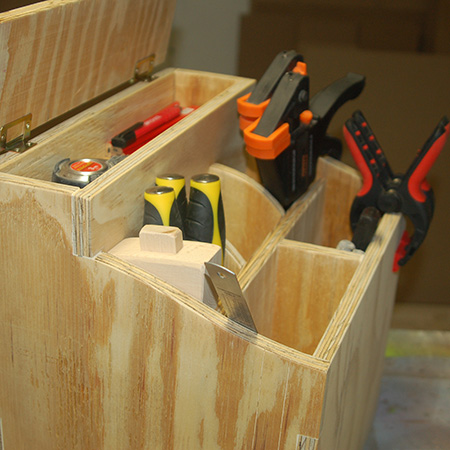
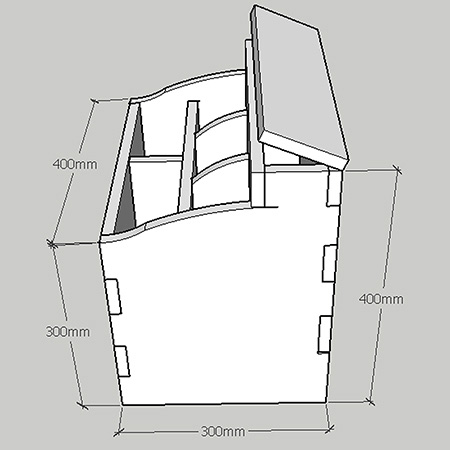



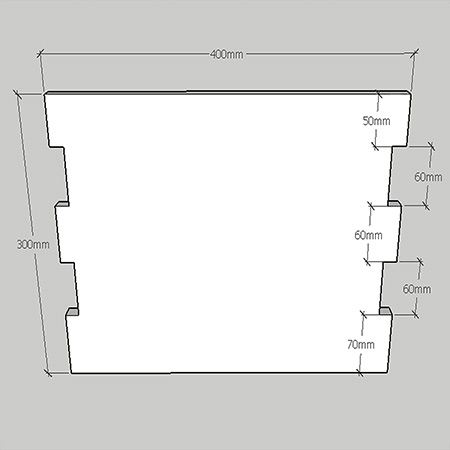
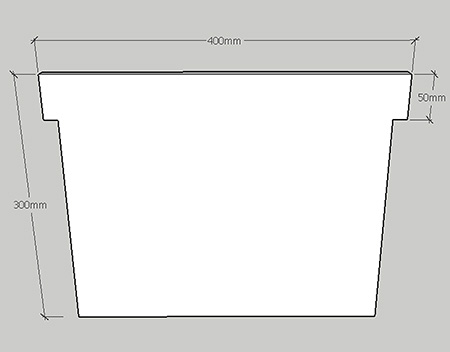




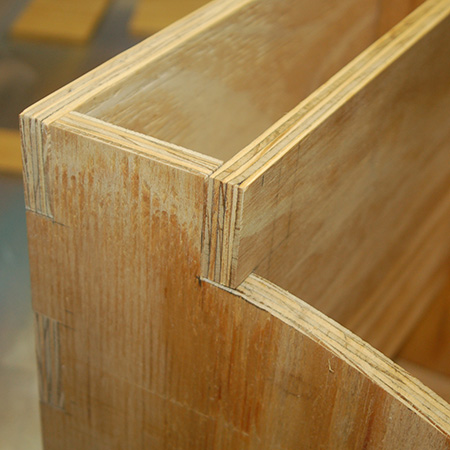

![3. Measure and mark 184mm on one side of both dividers - insert back and cut a curve at the top of the [2] dividers.](../2017/sep/37.jpg)











